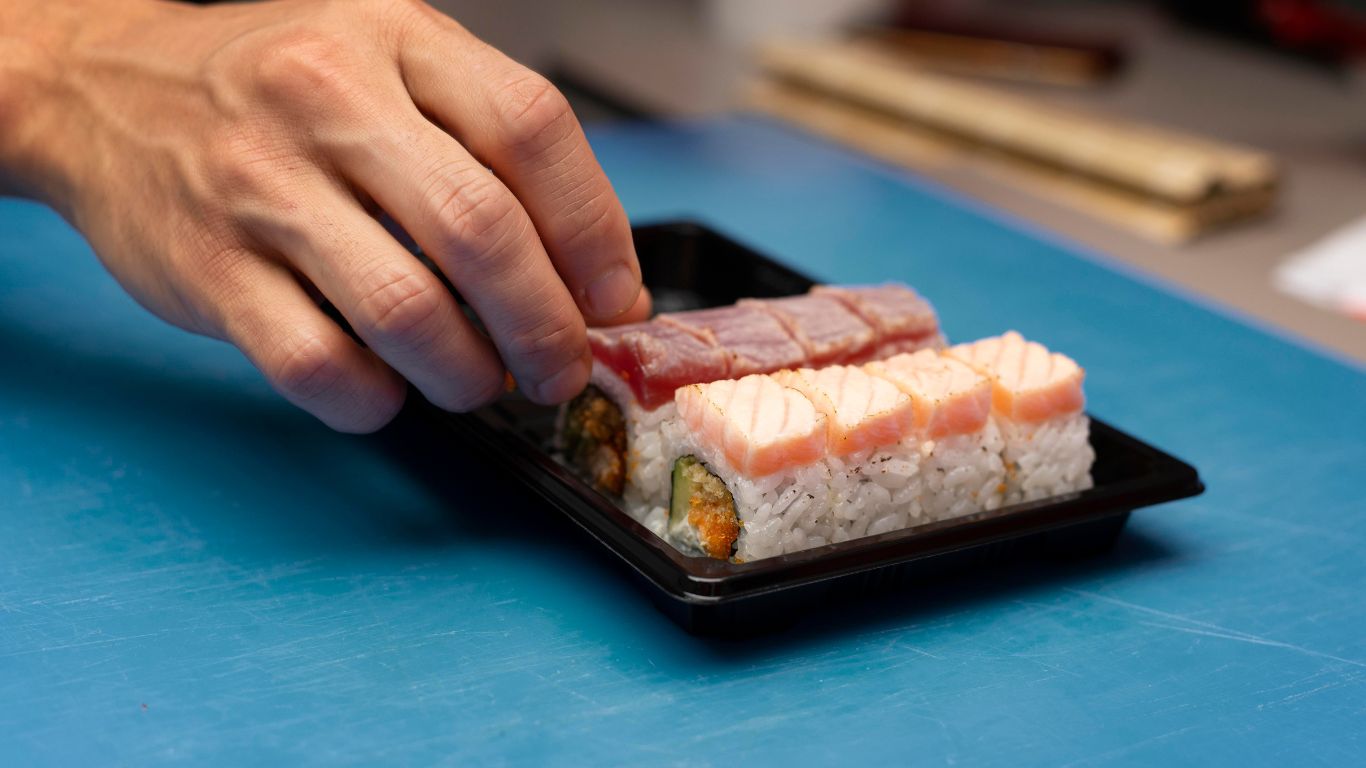
Onigiri, also known as Japanese rice balls, have become a popular snack worldwide. These handheld treats are made from seasoned rice, often filled with savory ingredients, and wrapped in seaweed. Their simplicity and versatility make them a favorite for many.
Understanding
Onigiri are rice balls that can be shaped into triangles, cylinders, or rounds. They are typically filled with ingredients like salted salmon, pickled plums, or tuna mixed with mayonnaise. The rice is sometimes mixed with seasonings or coated with sesame seeds for added flavor. A sheet of nori seaweed often wraps around the rice ball, making it easier to hold and adding a salty taste.
The Appeal of Onigiri
It are loved for their convenience and variety. They are easy to carry, making them a perfect snack for picnics, school lunches, or quick meals on the go. The endless possibilities for fillings and shapes allow for creativity and personalization. Moreover, onigiri are a healthy option, providing energy from the rice and nutrients from the fillings.
Finding Onigiri in Abbottabad
In Abbottabad, the availability of onigiri might be limited due to its specific cultural origin. However, with the growing popularity of international cuisines, some local eateries may offer Japanese dishes, including onigiri. Exploring local restaurants or cafes that serve Asian cuisine could lead to discovering onigiri near you.
Making Onigiri at Home
If it are not readily available in local eateries, making them at home is a fun and rewarding alternative. The process is simple and allows for customization based on personal preferences.
Ingredients Needed:
- Short-grain Japanese rice
- Water
- Salt
- Nori (seaweed sheets)
- Fillings of your choice (e.g., cooked salmon, pickled plums, tuna with mayonnaise)
Steps to Prepare:
- Cook the Rice: Rinse the rice thoroughly until the water runs clear. Cook the rice using a rice cooker or on the stovetop according to the package instructions. Once cooked, let it cool slightly until it’s warm but not hot.
- Prepare the Fillings: While the rice is cooking, prepare your desired fillings. For example, grill or bake salmon with a bit of salt, or mix canned tuna with mayonnaise and a pinch of salt.
- Shape the Onigiri: Wet your hands with water to prevent the rice from sticking, then sprinkle a little salt on your palms. Take a handful of warm rice and create an indentation in the center. Place a small amount of filling into the indentation, then mold the rice around the filling to form a ball, triangle, or cylinder. Press gently but firmly to ensure the onigiri holds its shape.
- Wrap with Nori: Cut the nori sheets into strips or appropriate sizes. Wrap a piece of nori around each onigiri. The seaweed adds flavor and makes it easier to handle the rice ball.
For detailed instructions and variations, you can refer to this guide:
Exploring Variations
It can be customized in numerous ways. Beyond traditional fillings, consider using local ingredients to create unique flavors. For instance, incorporating spiced meats or pickled vegetables common in Pakistani cuisine can offer a fusion twist. Additionally, experimenting with different shapes and sizes can make the experience more enjoyable.
Cultural Significance
In Japan, it are more than just a snack; they hold cultural significance. Often found in convenience stores, they are a staple in lunchboxes and are associated with comfort and home-cooked meals. Making onigiri is also a way to show care and affection, as they are commonly prepared by family members for loved ones.
FAQ
1. What is onigiri?
It is a Japanese rice ball, typically filled with ingredients like salmon, pickled plums, or tuna mixed with mayonnaise. It is wrapped in seaweed (nori) for easy handling and added flavor.
2. Where can I find onigiri near me?
3. Can I make onigiri at home?
Yes! Making it at home is simple. You need cooked short-grain rice, fillings of your choice, and nori. You can shape the rice into balls, triangles, or cylinders, and add your favorite fillings before wrapping them in seaweed.
4. What fillings can I use for onigiri?
The most common fillings include salted salmon, pickled plums (umeboshi), and tuna mixed with mayonnaise. However, you can get creative by using other ingredients like grilled chicken, spiced meats, or even vegetables.
5. Can I use regular rice for onigiri?
It’s best to use short-grain Japanese rice, as it is stickier and holds together better than other types of rice. If you use regular rice, it may not hold the shape as well.
6. Is onigiri healthy?
It can be a healthy option, especially when made with nutritious fillings. The rice provides energy, while fillings like salmon and vegetables offer essential nutrients. Be mindful of the seasonings and additives you use to keep it balanced.
7. How do I store leftover onigiri?
If you have leftover it, store them in an airtight container. They are best consumed within a day or two. You can also freeze them for longer storage. If frozen, wrap the onigiri in plastic wrap before placing them in the freezer.
8. How do I make onigiri with no nori?
If you don’t have nori, you can enjoy it without it. Just shape the rice into balls or triangles and leave them as is. Alternatively, you could wrap the rice balls with lettuce leaves or serve them without any wrapping.










